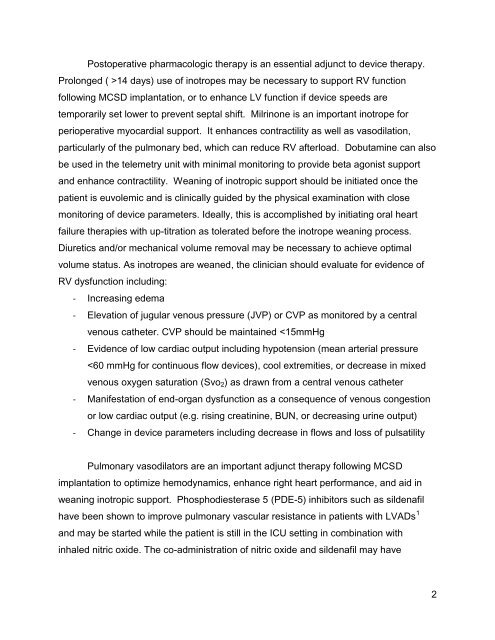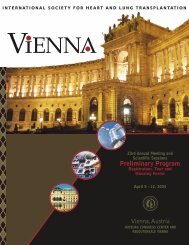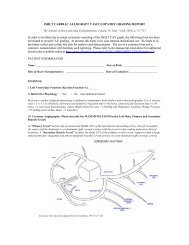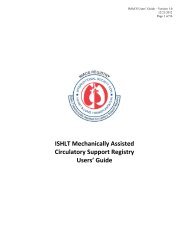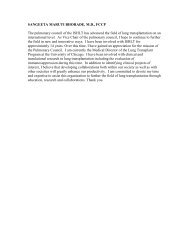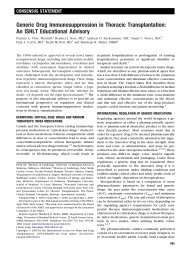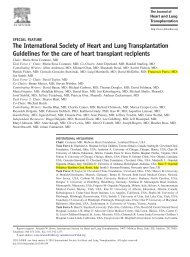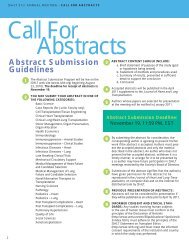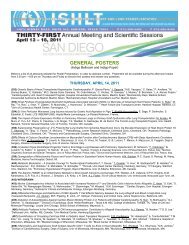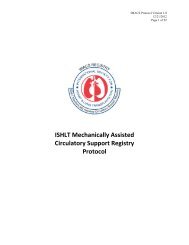Task Force 4: Inpatient Management of Patients with MCSD - The ...
Task Force 4: Inpatient Management of Patients with MCSD - The ...
Task Force 4: Inpatient Management of Patients with MCSD - The ...
Create successful ePaper yourself
Turn your PDF publications into a flip-book with our unique Google optimized e-Paper software.
Postoperative pharmacologic therapy is an essential adjunct to device therapy.<br />
Prolonged ( >14 days) use <strong>of</strong> inotropes may be necessary to support RV function<br />
following <strong>MCSD</strong> implantation, or to enhance LV function if device speeds are<br />
temporarily set lower to prevent septal shift. Milrinone is an important inotrope for<br />
perioperative myocardial support. It enhances contractility as well as vasodilation,<br />
particularly <strong>of</strong> the pulmonary bed, which can reduce RV afterload. Dobutamine can also<br />
be used in the telemetry unit <strong>with</strong> minimal monitoring to provide beta agonist support<br />
and enhance contractility. Weaning <strong>of</strong> inotropic support should be initiated once the<br />
patient is euvolemic and is clinically guided by the physical examination <strong>with</strong> close<br />
monitoring <strong>of</strong> device parameters. Ideally, this is accomplished by initiating oral heart<br />
failure therapies <strong>with</strong> up-titration as tolerated before the inotrope weaning process.<br />
Diuretics and/or mechanical volume removal may be necessary to achieve optimal<br />
volume status. As inotropes are weaned, the clinician should evaluate for evidence <strong>of</strong><br />
RV dysfunction including:<br />
- Increasing edema<br />
- Elevation <strong>of</strong> jugular venous pressure (JVP) or CVP as monitored by a central<br />
venous catheter. CVP should be maintained


